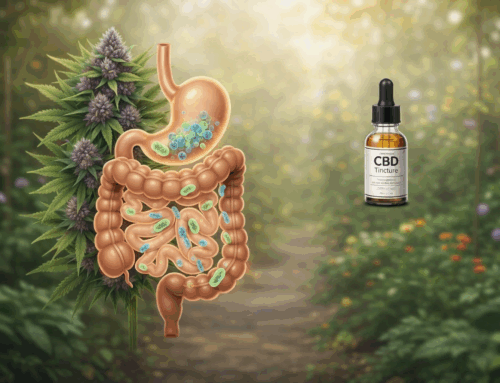Medical Marijuana is one of the most common natural drugs used in the world. As researchers have suggested, it is for multiple diseases for which traditional medicines have been ineffective. Moreover, there are many uses of medical cannabis. For example, some people use medical cannabis for enjoyment, while others use it for managing specific health issues such as chronic disease, PTSD, and many more. But still, there are many questions about medical marijuana trending on the internet. One of these questions is whether marijuana is a stimulant, depressant, or even a hallucinogen.
For a lot of people, marijuana can do several things; for some, it may help with calmness; for others, it may boost energy, and sometimes it can alter a person’s life for a short period. For the rest of this blog, we will discuss in simple terms how it impacts a person’s brain and body.
Potential Stimulant Effects
Sometimes, marijuana can help to energize you and make you feel alert—both effects associated with a stimulant. Stimulants are substances that increase the body’s speed, and some effects of marijuana that are close to being a stimulant are
- Greater mental energy
- Enhanced physical vitality
- Elation or excited feeling “euphoria.”
- Less sluggishness
- Elevated mood and greater happiness
- Increased heart rate
- Altered perception of time, feeling like it passes rapidly or slowly
It feels like these effects are more likely to take place in someone who is new to using marijuana or has just started to experiment.
Possible Relaxation Effects
Cannabis is used commonly for relaxation—this is why many experts consider it a depressant. Finally, using cannabis can lead to being a depressant, which can contribute to the following:
- Slowed brain functions or thinking
- Drowsiness
- Relaxation
- Slow movements
- Reduced speech clarity
- Lapse in memory
Tired or lazy feelings are familiar to some, and that tends to happen after marijuana consumption. As time and consumption increase, these effects become common.
The Two-Phase Nature of Marijuana
Marijuana is often biphasic, meaning it works in two phases. Initial effects may include increased talkativeness and laughter. These stimulant-like effects can occur shortly after cannabis consumption.
People may also perceive:
- Heightened focus
- Increased sociability
- Elevated happiness or excitement
These effects are most often brief and occur during the initial phase of the marijuana “high.”
Further Depressant-like Effects
The relaxing, sleepy, and depressant effects of marijuana contribute to the following:
- Increased difficulty staying focused
- An increased desire to sleep or rest
- Sluggishness
- Fatigue
Considering how marijuana is purported to aid some individuals in relaxing or sleeping provides enough evidence that it certainly has some depressant qualities.
Medically speaking, marijuana might be categorized first as a stimulant, then considered taking a more chill approach depending on the dosage and the person.
Factors Affecting These Effects
Dosage and Strength : As with any substance, the amount you use can change how it makes you feel. Using a small amount may keep you alert, while a higher amount could make you drowsy or lightheaded.
Higher-strength marijuana may induce relaxed or tired feelings.
Lower-strength marijuana may induce increased activity.
So, the amount and strength of the substance can certainly affect its effects.
Personal Differences : Everyone is different, which means the way people respond to marijuana can be different as well. The following factors can affect the difference in response to marijuana:
- Age
- Frequency of use
- User’s brain chemistry
- Existing mental health conditions
- History of other drugs used
People respond differently to anxiety. Some feel relaxed, while others feel uncomfortable and lost in their thoughts.
There are cases where people feel or see things that are not there, especially at higher doses or with certain strains. This is known as hallucinogenic effects.
Marijuana as a Stimulant, Depressant, and Hallucinogen
Marijuana can be classified into one of the three main drug categories:
- Stimulants: Increases one’s heart rate, blood pressure, and general alertness.
- Depressants: Help ease anxiety and calm the person down.
- Hallucinogens: Changes one’s perception of reality, whether it’s vision, sound, or touch.
Due to its numerous effects, specialists have been unable to categorize it into a single category. Most scientists mark the primary effects of marijuana to be depression with some stimulant and hallucinogenic effects.
What Does the Research Say?
Scientists are still learning how marijuana affects people’s feelings. Some people feel happy and have lots of energy when they use it. Others may feel calm or sleepy. Some might see things that aren’t there or hear strange sounds.
While some people report feeling happier and experiencing increased energy, others may feel calmer and sleepier. Hyperactive users may alternatively experience auditory or visual hallucinations.
Some users have reported improved calmness with mental health symptoms. In contrast, other users seem to have developed symptoms that are worsening, emphasizing the dualistic nature of marijuana’s risks and benefits for mental health issues.
Final Thoughts: Is Marijuana a Stimulant or Depressant?
The Short Answer Is: It Depends : Marijuana Triggers a Unique Response in Each Individual. Most people use it when they’re hanging out with friends because it gives them a boost of happiness and can help them feel brave enough to try new things. However, sometimes, if someone goes overboard, it can knock them out and leave them extremely tired. Their Sleepy Phase Will Follow After They Experience Energetic and Joyful Feelings.
Marijuana Can Alter the Things You See and Hear. Although It is Commonly Used For Relaxation Purposes, Not Every Strain is the Same. Different Strains and Methods of Consumption Can Alter the Effects.
Conclusion
In conclusion, we can say that cannabis is a serious issue. It can serve as a hallucinogen, stimulant, or depressant, and even then, it varies with dosage, the strength of the weed, and the individual’s health.
As with some known stimulants, cannabis increases blood pressure and heart rate. At the same time, it may function as a depressant, easing the brain into a relaxed state and slowing mental processes. Some might even describe it as mildly hallucinogenic.
The effects of medical marijuana vary from person to person, as does the reason for consumption, which is why it is very important to understand its history, benefits, and side effects and also consult a medical marijuana doctor before use. Whether the motivation is medicinal or recreational, safety and responsibility should always be the top priority.
FAQs
Can medical cannabis help with diabetes control?
Yes, some studies suggest that medical cannabis for diabetes may help manage symptoms like inflammation and neuropathic pain. However, it should only be used under medical supervision, as its effects can vary and more research is needed on cannabis and diabetes control.
What’s the difference between HHC and Delta 9 THC?
HHC vs Delta 9 THC is a common comparison. HHC (Hexahydrocannabinol) is a hydrogenated form of THC that’s less potent, while Delta 9 THC is the main psychoactive compound in marijuana. Delta 9 is more widely studied and regulated, whereas HHC is newer and less understood.
How can I safely detox from marijuana?
Marijuana detox involves stopping cannabis use and allowing the body to naturally remove THC. Common detox symptoms include mood swings, trouble sleeping, and irritability. Staying hydrated, eating healthy, and resting can help ease the process.
Is medical marijuana safe for seniors?
Yes, medical marijuana for seniors can be beneficial for conditions like chronic pain, arthritis, and insomnia. However, dosage must be carefully managed to avoid side effects like dizziness or confusion. Seniors should consult a doctor before starting cannabis treatment.
How does marijuana affect people with diabetes?
Cannabis and diabetes control is a complex topic. While marijuana may reduce inflammation and pain, it can also affect appetite and blood sugar levels. Diabetic patients should always consult a medical cannabis specialist before using it as part of their care plan.





